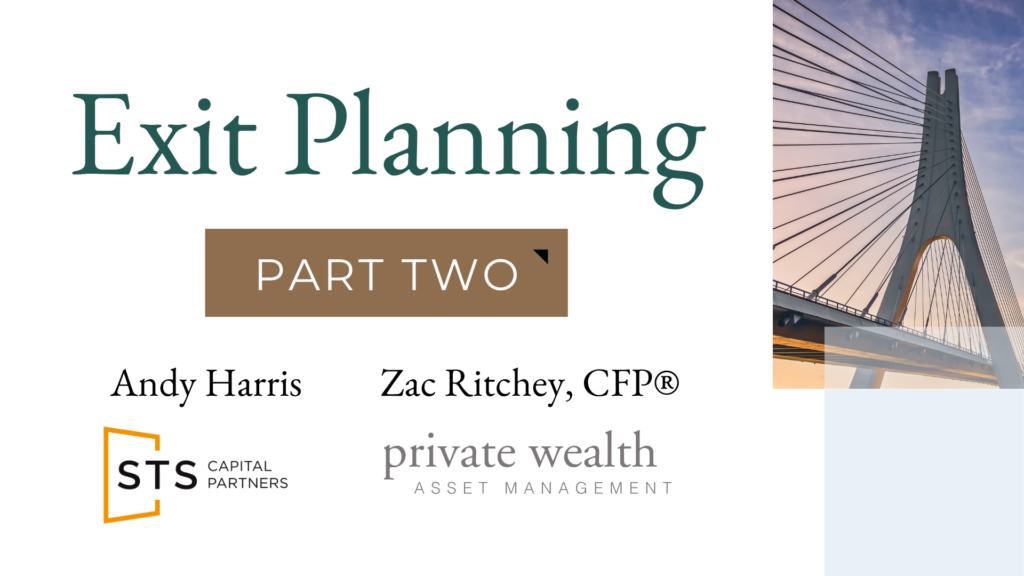Navigating Risk Tolerance and Returns
Understanding your risk tolerance is fundamental in shaping any investment strategy; however, it shouldn’t be a one-size-fits-all approach. While time horizon plays a significant role in dictating an appropriate strategy, you should assess your appetite for risk based on each unique goal or objective.
Consider the scenario of planning for generational wealth transfer. With a long-term outlook, you might be more comfortable with higher-risk investments, given the extended timeframe to manage around and recover from market fluctuations. This approach could include a diversified mix of equities, real estate, and alternative investments (if appropriate), aiming for growth that outpaces inflation and builds on the legacy you want to leave for the next generation.
On the flip side, a conservative stance might be more appropriate if you’re nearing a milestone, such as a planned charitable contribution or a significant purchase. In these cases, preserving capital is paramount, favoring investments in fixed-income or money market funds that offer security and liquidity.
Whether aiming to amplify your wealth or preserve it for future generations, the key lies in striking the right balance between risk and return.
Assessing Risk Tolerance and Investment Objectives
To assess risk tolerance, we first have to understand the investment objective. The “who,” “what,” and “when” of your investment goals typically have the biggest influence on targeted risk and allocation.
Are you looking for long-term growth or short-term preservation of capital? Are you saving for a remodel or a retirement home on the beach? Are you saving for your kids’ education or future grandkids’ education?
Assessing risk tolerance also allows us to compare different investment vehicles to determine your best fit. By understanding your risk tolerance, we can evaluate the potential returns and risks associated with various investment options, helping us make informed recommendations tailored to your needs.
Who
Whether investing for yourself, your child, an aging parent, or another beneficiary, the intended recipient of the investment’s benefits significantly influences how you approach risk.
Investing for oneself often allows for a more personal risk assessment closely tied to individual financial circumstances, career stage, and retirement horizon. For example, if you are in the prime of your career with a stable income, you might be more open to higher-risk investments, knowing you have time to recover from potential market downturns. Here, the focus might be on growth to maximize long-term returns.
On the other hand, when investing for a child, such as saving for college through an education savings plan, the timeline becomes more defined and perhaps shorter, necessitating a mix of investments that balance growth and safety. As the goal’s deadline approaches, you may shift towards a more conservative approach to preserve the accumulated capital.
Investing on behalf of an aging parent introduces another dimension to risk tolerance. Here, the primary concern often shifts towards ensuring stable and accessible funds for healthcare or living expenses, with a preference for low-risk, liquid assets that can support immediate needs without exposing the portfolio to undue market volatility.
Each scenario illustrates how the “who” of your investment goals shapes your portfolio’s risk profile and strategic allocation. It’s not just about the financial return but also ensuring that the investment strategy is empathetic to the needs, life stage, and welfare of the individual for whom the assets are being managed.
Read: Investment Strategies to Protect Family Wealth
What
Often, the “what” of your investment goals plays the biggest role in shaping your risk tolerance.
The nature of your goal—whether it’s saving for a dream home, securing your child’s college education, building a retirement nest egg, or preserving wealth for future generations—profoundly impacts your investment approach and risk tolerance. Each goal comes with its own timeline, financial requirements, and personal significance, which dictates the level of risk you may be comfortable assuming.
For example, if you’re investing with the aim of purchasing a home in the next few years, you may prioritize capital preservation over aggressive growth, opting for low-risk investments that offer stability and liquidity. In contrast, if you’re focused on long-term objectives, like retirement or generational wealth transfer, you might be more inclined to allocate a significant portion of your portfolio to equities or other higher-risk investments, banking on the potential for greater long-term returns and accepting short-term volatility.
Moreover, the “what” of your goal influences the type of investments you choose and the strategic allocation of your assets. A clear understanding of your investment objective enables you and your Private Wealth Advisor to craft a bespoke strategy that balances risk and return, aligning with your financial horizon and life aspirations.
When
You often have the luxury of time for long-term goals, such as retirement planning or establishing a legacy fund. This extended timeline allows for a greater allocation to equities and other higher-risk investments. The rationale is simple: over the long haul, markets have historically trended upwards, and the extra time allows your investments to ride out the volatility and benefit from potentially higher returns.
Conversely, when an investment goal is on the near-term horizon, such as saving for a down payment on a home in the next few years or purchasing a new car, the approach to risk needs to be more conservative. If you have a 12—to 18-month goal of bringing home a shiny new vehicle, investing in the stock market may not be the best option. Equities can be unpredictable in the short term, so you may want to consider safer investment options.
Short-term goals necessitate preserving capital to ensure funds are available when needed, regardless of the current market conditions. Lower-risk investments like bonds, money market funds, or stable-value investments become more attractive in such scenarios. These options provide less exposure to market swings, helping to safeguard the principal investment against sudden downturns.
The “when” of your investment objectives requires a strategic balance between growth and security. As the target date approaches, a gradual shift from higher-risk to lower-risk assets—known as a “glide path”—can help smoothly transition the risk level in line with the diminishing time frame.
Benefits of working with financial advisors
At Private Wealth, we help our clients understand and articulate their comfort with risk, aligning it with their financial goals. This tailored approach is key to creating an investment strategy that fits your risk profile.
By incorporating Monte Carlo simulations into the planning process, your financial advisor can demonstrate the likelihood of achieving your financial goals under varying market conditions and asset allocations. This insight allows for a more educated discussion about the level of risk you are willing to take and helps tailor your asset mix to suit your risk tolerance and investment objectives.
Investment strategies can change over time. If manageable, we advise our clients to review their investments at least quarterly. This way, you can assess whether your investment strategy is still in line with your goals and make any necessary adjustments. Doing this with shorter-term goals is especially important, as market fluctuations can significantly impact the outcome.
Reach out to a wealth advisor and schedule a time to review your investment goals.





